How to swing an axe?
An axe is a tool with a sharp edge, so you’re prone to hurting yourself if you don’t know how to use it properly.
Also, you can strain your back if you’re applying the wrong technique with the axe.
In this guide, we’re elaborating on some of the best practices when swinging an axe.
What is an Axe Used For?
An axe is a versatile tool with numerous applications that are as follows:
- Felling trees and limbing branches.
- Hewing logs and woodworking applications like making mortise and tenon joints
- Splitting firewood (Splitting Maul and splitting axes)
- Throwing during axe-hurling competitions
How to Hold an Axe Correctly?

Correct Axe Holding Technique.
Getting the axe-holding technique is the key to getting the best out of the tool.
Primarily, you should have your left hand on the end of the handle and the right hand on the handle part adjacent to the head.
It is the holding orientation for right-handed guys.
You should reverse this order if you’re left-handed (that is, your left hand just beneath the head and the right hand on the handle end).
Also, it is imperative to loosen the grip on your right hand so that as you drop the axe on the wood, it slides back up until it meets the left hand.
Nonetheless, ensure your right-hand grip is not too loose to the point that it wobbles as you’re holding the axe.
How to Swing an Axe Correctly?
Best Technique to Split Firewood
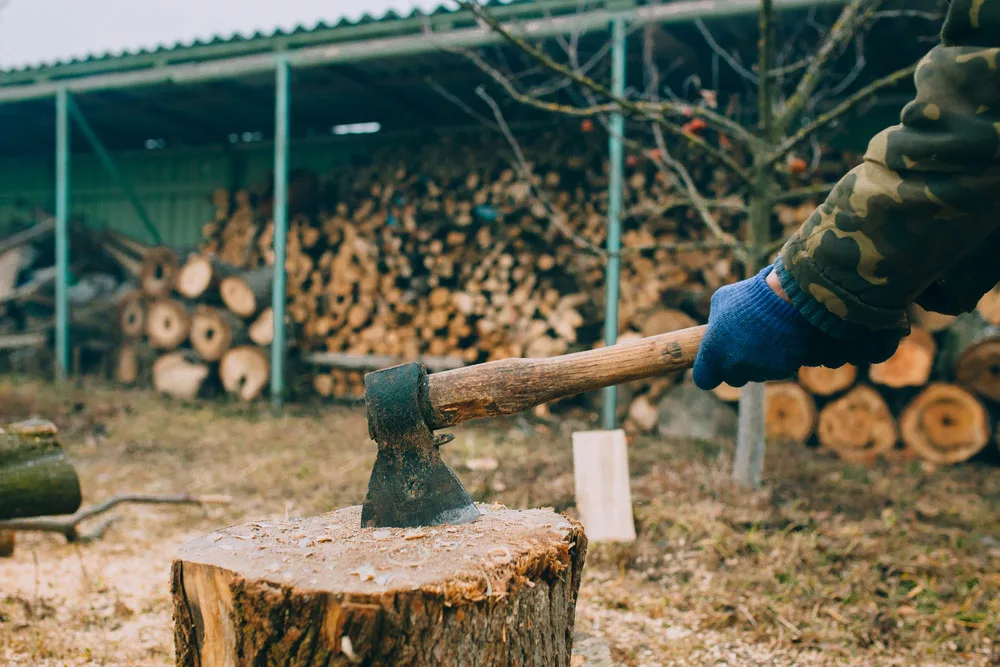
Splitting a log.
Primarily, you must have the best axe for a wood-splitting job.
You can either go for the splitting axe or the splitting maul. Here are the steps to the best firewood-splitting technique with an axe.
- Start by standing upright with your legs slightly apart, just enough to give stability. Some prefer putting one foot slightly forward for more stability. But you shouldn’t move it too far forward, as this aggravates the chances of injuring yourself.
- Next, hold the axe correctly (with the dominant hand close to the head and the other at the back of the handle).
- Raise the axe above your head and bring it down to the wood you’re splitting. As you do the downswing, allow your right hand (or your dominant hand) to slide back smoothly until it meets the other hand.
- You must allow the axe to drop smoothly without necessarily applying your strength, which might end up hurting your back. Also, while swinging, ensure you squat slightly to build up some force on the axe that you’ll use to deliver a robust downswing.
- If you’re splitting a long piece of wood, ensure it’s stable on the surface to avoid ricocheting back to you after the downswing. Again, for a wide wood truck, it’s imperative to avoid striking the center. Instead, target the zones where there are widely spaced threads.
Best Technique to Fell Trees

A lumberjack with an Axe.
The steps to felling a tree without using much force are as follows.
- First, stand on one side of the tree you intend to bring down. The position allows you to cut the tree from the side without a chance that you’ll injure yourself.
- Hold the felling axe appropriately with the dominant hand near the head and the other on the rear.
- Next, cut the tree laterally against its grain. The ideal cut for bringing down the tree faster should be slightly inverted rather than perfectly horizontal (cut at an angle of about 45 degrees). Chop it down as if you’re creating a wedge-shaped cut on the area you’re cutting.
- Also, after making the slant cut, do the back cut on the lower side of the wedge to hasten the tree felling process.
Best Technique for Limbing Trees
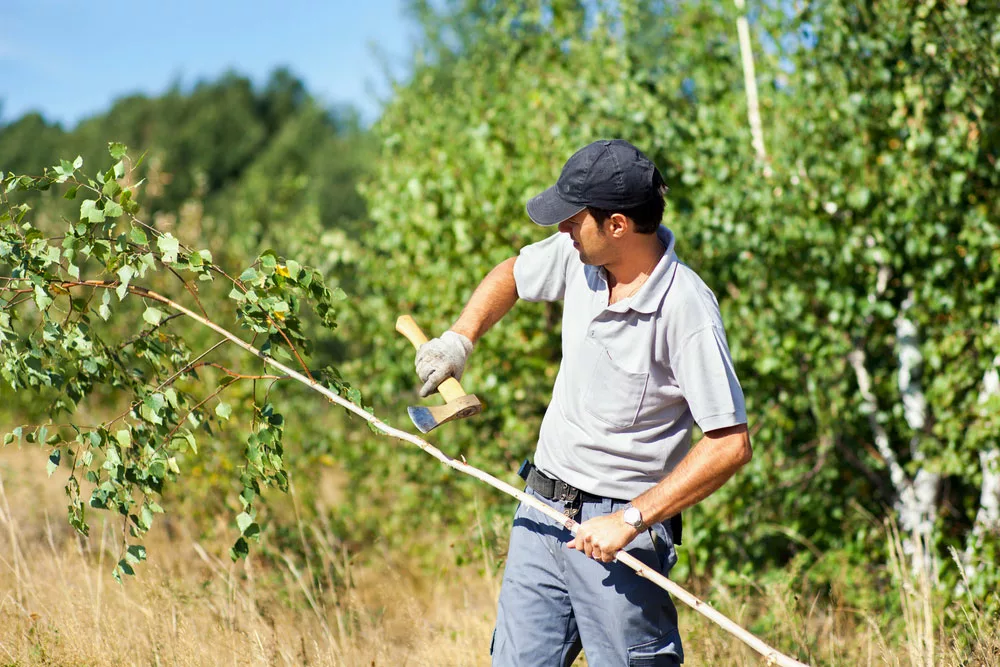
Limbing a small tree.
You have cut down a tree trunk, and now it’s time to remove the branches (limbing). The tree-limbing steps include the following:
- Stand on one side of the tree trunk you’re climbing (you should stand on the opposite end of the branches you intend to remove).
- For safety and to create a good working environment, start by limbing the branches facing upwards. The ideal limbing technique is to cut the branches at a right angle to the tree trunk.
- You are likely to injure yourself when limbing, so avoid the enthusiastic swing. Instead, bring down the axe with a gentle and firm swing, and with a few swings (especially if you have sharpened your axe), the branch will come off.
Best Technique for Bucking Trees
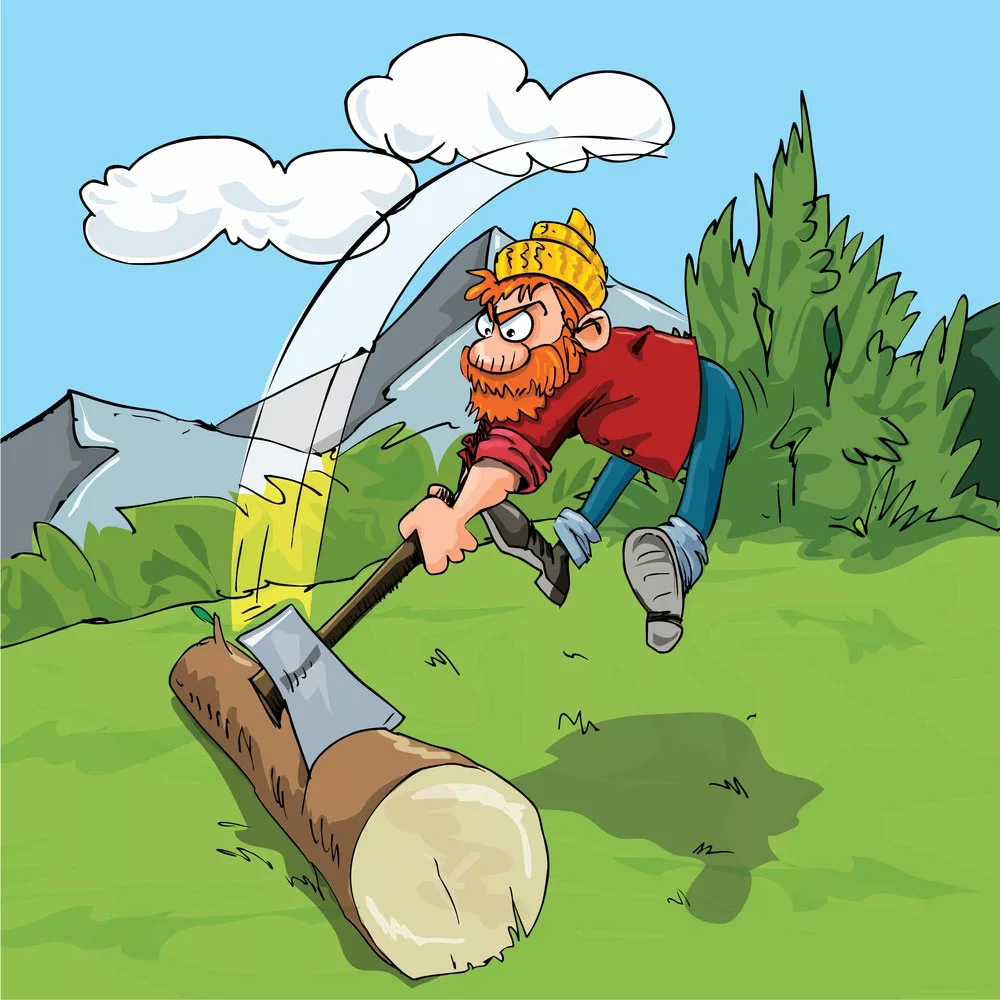
Bucking a wood log.
Bucking a tree helps break it into small bits that are easy to ferry to your preferred destination. Here are the two tree-bucking steps.
- Stand while facing the tree trunk and ensure your feet are firm on the ground.
- Next, cut the tree across the grain. Make a v-cut (or wedge) for a fast cut using a felling axe or another axe suited to cutting across the grain.
- You can also make alternate cuts on the log to hasten the bucking process but primarily, ensure you hold your axe appropriately to generate the appropriate swing.
Best Contact Splitting technique
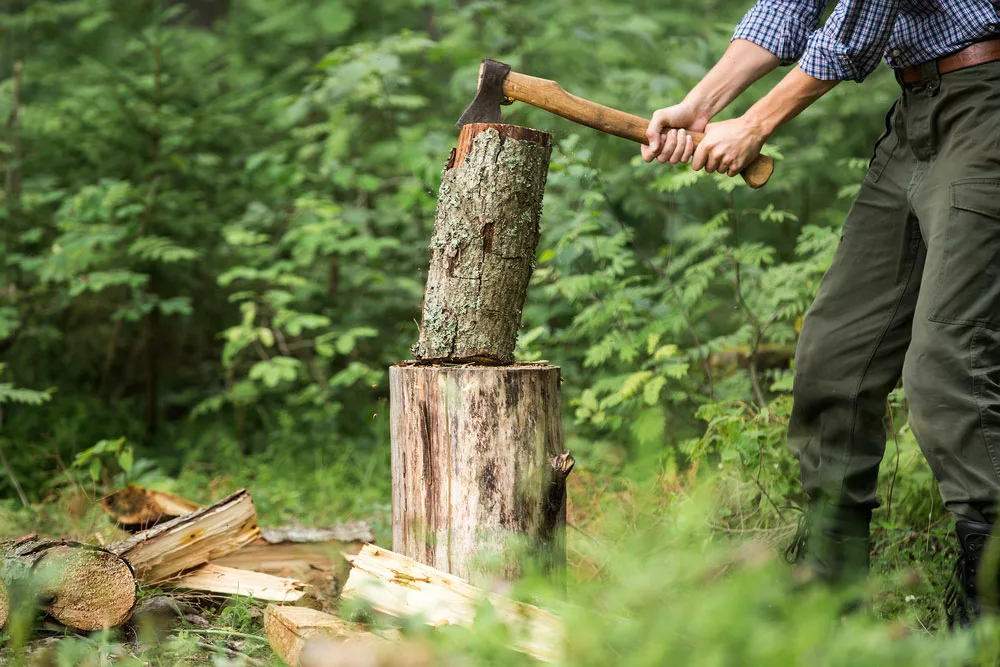
Breaking firewood via contact splitting.
Contact splitting breaks small firewood blocks into small bits by ramming them on a platform (often a wood surface) with the axe still on it.
The technique assists in breaking wood with tight grains that cannot easily break via the usual wood-splitting methods. It is also ideal for splitting firewood using small axes and hatchets.
- Hence to break wood via the method, you must first prepare the chopping block (usually a wood log).
- Next, lodge the axe into the wood you’re splitting and raise it, then bring it down to the wood log. The firewood block will split into two.
- Again, avoid the enthusiastic downswing, especially when using a small axe, as you are likely to injure yourself since it’s lightweight.
How do I Keep My Axe in Great Shape?
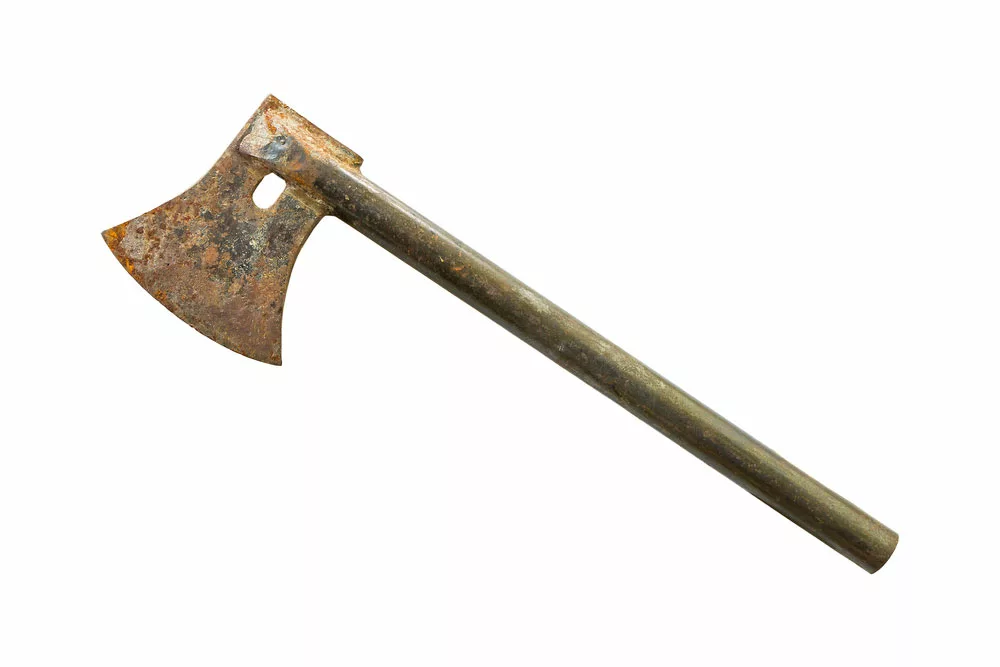
Don’t leave your axe out to avoid rusting.
Here are the top care tips for your axe:
- First, never leave your axe outside, especially when you’re not using it. It is likely to rust when left out due to water and cold exposure.
- Avoid inappropriate use of the axe, such as hammering nails or other uses that can damage it.
- Apply oil on the axe head after use, especially if you split green wood.
- Also, clean your axe after cutting sappy firewood such as pine using a knife to scrape off the sap, then oil it.
- Oil your wooden axe handle to protect it from water elements that may induce rotting and hasten tear and wear. Water also encourages warping, which will damage the axe’s user experience.
- Warm the axe head whenever you’re using it in cold weather, as it is likely to break off when you use it while cold.
Why Sharpen Your Axe Before Use?
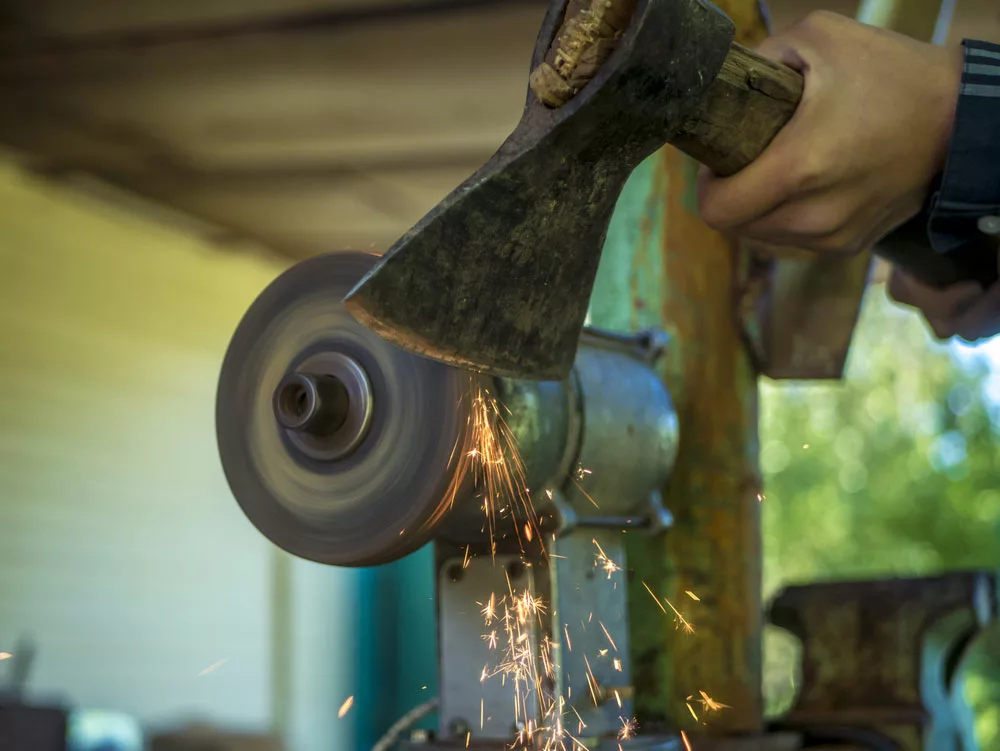
Sharpening an Axe.
A sharp axe will give you the best user experience and save time and energy. It also protects you from strain injuries resulting from using a blunt axe.
So, ensure your axe is always sharp, especially when cutting hardwood.
Luckily, there are myriad ways to sharpen your axe, so you shouldn’t have trouble keeping it sharp even in the woods.
Conclusion
The cardinal reason you should know how to swing your axe is to protect yourself from injury.
An axe is a dangerous tool, capable of causing you permanent disability if you misuse it.
Our guide has covered the best swinging practices, but you can always get to us for more.
